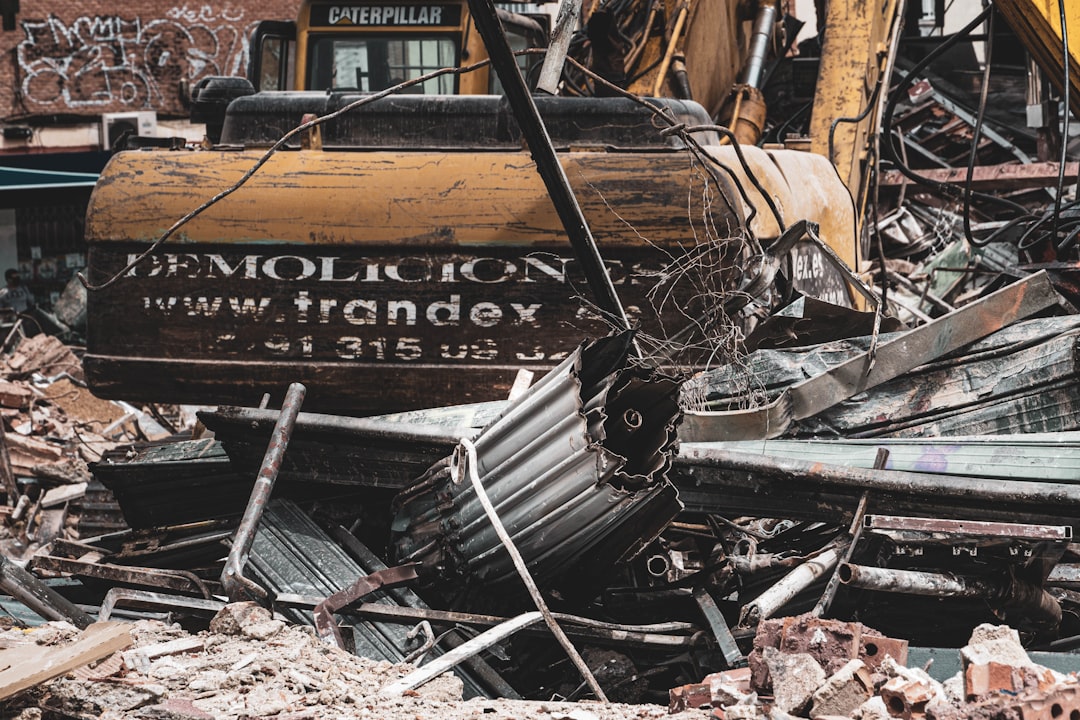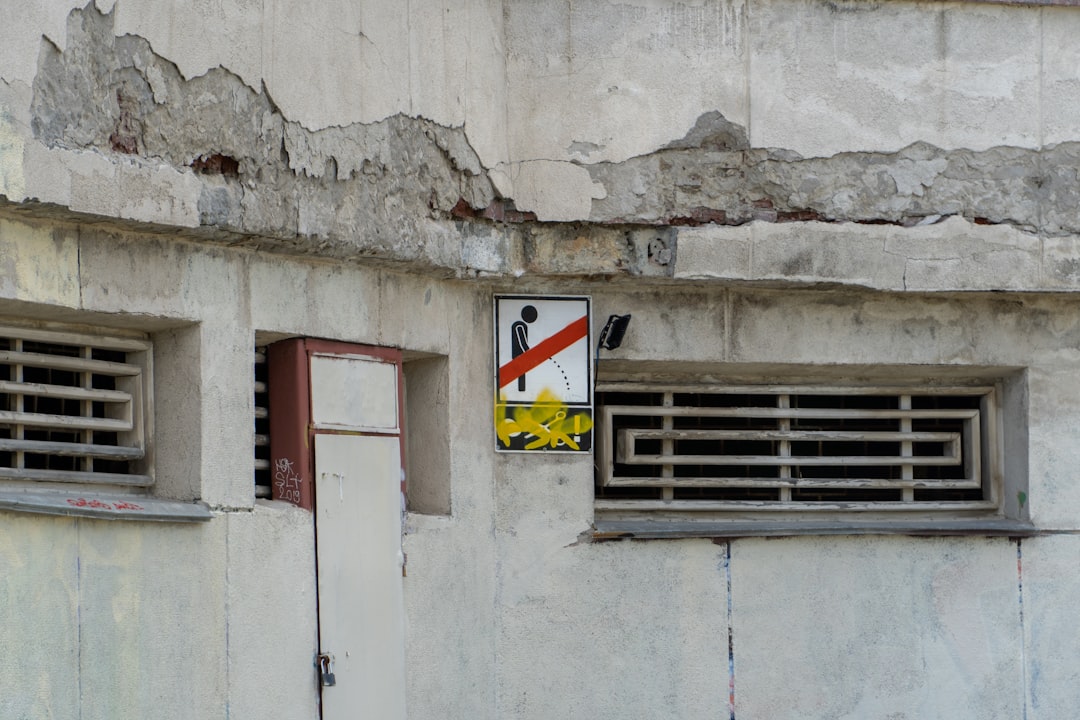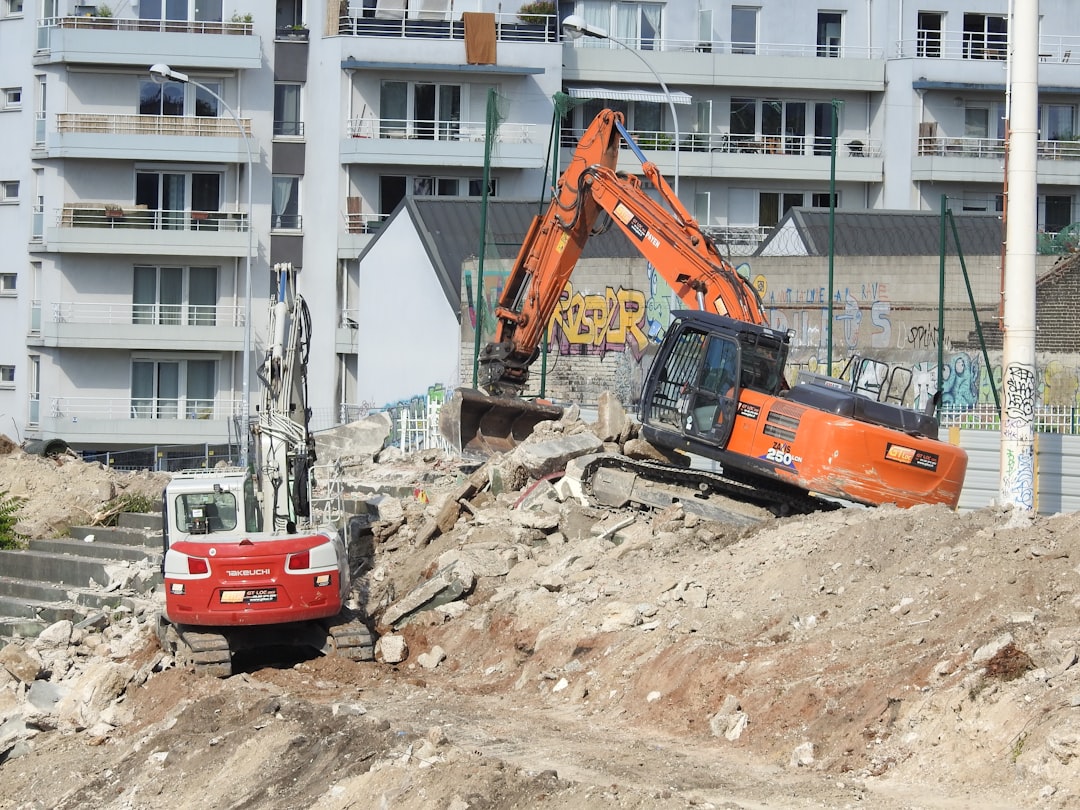

Engage prospects with a scan and streamline customer engagement with FREE QR code marketing tools by Sona – no strings attached!
Create a Free QR CodeFree consultation

No commitment

Engage prospects with a scan and streamline customer engagement with FREE QR code marketing tools by Sona – no strings attached!
Create a Free QR CodeFree consultation

No commitment
QR codes have become a powerful tool for demolition contractors, linking job sites and stakeholders with critical information and workflows instantly. Many businesses continue to struggle with fragmented communication, manual data entry, and a lack of real-time visibility, impacting safety protocols, project timelines, and compliance requirements. For companies managing complex demolition projects, QR codes bridge the gap between physical sites and digital process management, providing easy access to safety protocols, documentation, and checklists where precision and efficiency are essential.
The construction and demolition industry is rapidly adopting smart technologies, and QR codes stand out for their simplicity, versatility, and real-time data capture. Many contractors face challenges tracking high-value prospects and decision-makers, especially when interactions occur without forms or paperwork. Instead of relying on outdated paper forms or risky verbal instructions, a simple QR scan can provide workers and managers with up-to-date safety data, environmental paperwork, and compliance information, all while ensuring key details are centrally captured and not lost between platforms.
Integrating QR codes into daily operations enables demolition contractors to improve safety compliance, documentation accuracy, and project efficiency. Consolidated scan data reduces confusion and offers a unified view of project interactions, minimizing missed leads, unidentified stakeholders, and compliance shortcomings. Discover how QR codes can be tailored to meet critical needs and deliver measurable value for modern demolition firms.

QR codes seamlessly connect job site realities with centralized digital systems, enabling secure, documented access for field teams, inspectors, and clients. They replace clipboards and sign-in binders with a single scan that verifies credentials, triggers safety briefings, and documents attendance automatically. This creates a digital trail that is far easier to audit and share with regulators, insurance partners, and clients.
Many contractors have struggled with missing high-value contacts or inaccurate manual check-ins that lead to confusion and lost time. Fragmented sign-in methods often fail to track who was present and when, increasing operational and compliance risks. By using QR codes at access points, demolition firms can confirm training completion, distribute dynamic site protocols, and control who is authorized to enter. This approach reduces delays at the gate, lowers the chance of costly violations, and speeds coordination between the field and the office.
Digital check-in workflows require little training for end users, yet they deliver outsized visibility to project managers. Tools like Sona QR make it easy to create, brand, and manage codes, while Sona.com connects scan engagement to downstream actions like safety training completion or bid requests. The result is a controlled entry process, faster onboarding of visitors, and a reliable data trail that strengthens safety culture and stakeholder trust.

Demolition contractors navigate constantly changing worksites, strict safety standards, and complex regulations. Tracking all visitors is challenging, and some contacts go unrecorded, which may mean missed leads or incomplete compliance records. QR codes reduce ambiguity by converting every site touchpoint into a digital interaction that is timestamped, attributed, and easy to manage across teams and tools.
They also streamline experiences for workers, clients, neighbors, and public officials who need information quickly. Rather than walking back to a trailer for a binder or calling a superintendent, a QR code on a sign, gate, or piece of equipment provides instant, authoritative information. That information can be updated centrally without reprinting, which is vital when conditions shift daily.
On typical demolition materials like site entry boards, neighborhood notices, equipment labels, and bid packets, QR codes turn static information into living documents. This supports safer operations, better communication with surrounding communities, and faster sales cycles when prospects are comparing firms, with transparent air monitoring and updates available on demand.

Demolition contractors use multiple QR code formats tailored to different scenarios. Selecting the right format ensures the scan triggers the correct action, while dynamic management keeps content fresh over a long project timeline. When formats are mismatched, data becomes fragmented and hard to attribute, which weakens compliance and sales visibility.
For most job sites, a mix of dynamic web links, secure forms, and contact cards covers the majority of use cases. These codes can be printed on rugged labels, laminated placards, and magnetic signage that withstands dust, vibration, and weather. With Sona QR, you can manage all formats in one dashboard, apply branding, and rotate destinations as the project progresses from pre-demo to site restoration.
Dynamic QR codes are particularly useful in demolition because instructions, hazards, and contacts change rapidly. A single dynamic code on a gate can deliver different content by time of day, trade, or role, allowing tailored experiences without complicating the physical environment.
Eliminating inefficiencies caused by missing contacts and fragmented outreach is crucial for demolition contractors’ growth. QR codes help transform anonymous engagement into identifiable interest by tagging scans to projects, locations, and roles. This gives sales teams a clearer view of who is engaging with your credentials, safety culture, and case studies.
Think of every physical asset as a potential campaign touchpoint. Hard hats, debris containers, signboards, and bid packages all create chances to convert curiosity into a conversation. The more you map your physical environment to digital engagement, the more you can see which messages resonate, which projects attract attention, and where you are losing potential opportunities.
By analyzing scan data across these assets, you can pinpoint where interest is strong, which roles are engaging, and where to invest marketing resources. Over time, this creates a more predictable pipeline driven by quantifiable interactions, not guesswork. In adjacent trades, QR for roofing shows how codes drive local leads.

QR codes do more than route to web pages. They drive specific actions that reduce risk, shorten workflows, and generate measurable business impact. The most valuable deployments solve frequent friction points in daily operations and client communications.
Successful demolition firms focus on use cases that improve safety accountability and accelerate deal momentum. When each scan triggers a clear next step, teams experience less lag in decision making and more confidence that documentation is current.
These use cases can be launched with a small set of codes and expanded as teams adopt the workflows. Start with one or two high-impact actions, then extend to other processes that benefit from real-time visibility.
Each QR scan provides intent signals that can feed segmentation strategies if captured and synced to your systems. In demolition, audience distinctions might include prospects versus current clients, subcontractors versus inspectors, or community residents versus public officials. When codes are unique to each touchpoint, you can map behaviors to lifecycle stages and deliver targeted follow-up.
Avoid the trap of treating all scans equally. A gate check-in by a subcontractor suggests operational engagement, while a scan on a bid sheet suggests sales interest. Tagging and routing scan data accordingly turns QR codes into a reliable source of qualified audiences for email, SMS, and paid media retargeting.
Practical example: a city facilities manager scans a QR on your bid package to view credentials, then scans again later to review a hospital demo case study. Those two scans can add the contact to a healthcare-focused sequence and schedule a light-touch follow-up by your estimator within 24 hours.
Disjointed marketing across print, site signage, email, events, and social engagement can make prospect journeys and ROI unclear. QR codes act as connectors that unify experiences and tie offline actions to online systems. When every code is tagged and tracked, you gain a single source of truth for which materials, locations, and messages generate real engagement.
A practical integration plan starts by identifying your most common media types, then standardizing the way QR codes appear across them. Use consistent branding, clear calls to action, and short explanations of what happens after the scan. Over time, analyze performance by channel to refine placement, creative, and offers.
QR codes serve as the offline on-ramp to your digital marketing engine while unlocking data from channels that were previously hard to measure. With a centralized platform like Sona QR, you can manage codes across channels, monitor performance, and sync scan data with your CRM and ad platforms to drive consistent, measurable results.
A successful QR rollout in demolition depends on aligning each code with a clear outcome, testing for field realities, and instrumenting analytics from day one. Treat this like any other project plan with defined goals, milestones, and responsibilities. Begin with a simple pilot at one site, then scale what works across your portfolio.
Before you build, decide which analog processes you will replace and which stakeholders you must support. For example, if you aim to reduce check-in time by 50 percent, craft a concise mobile form with autofill and multilingual support. If you want to improve neighbor communications, prepare an always-current page with work hours, contact information, and air monitoring summaries that are understandable to a layperson.
Define whether your focus is on access control, compliance documentation, or equipment safety management. Lack of clarity leads to underutilized codes and noisy data. Narrow the scope to one or two high-impact workflows so your team can learn quickly and deliver visible wins.
Describe success upfront. For instance, aim to trim average gate processing time from three minutes to one minute, or to increase near-miss reporting by 30 percent. With a clear goal, you can tailor form fields, landing page content, and automation rules to drive the right behavior.
Match the code type to the action you want. Dynamic codes are ideal when content changes or when you need analytics and retargeting. Static codes are acceptable for fixed resources, but they do not offer flexibility if the destination must be updated mid-project.
Consider security and privacy requirements. If collecting personal information, route scans to encrypted forms and apply role-based access to the resulting data. For public content like neighbor notices, a web link to an informational page is sufficient.
Customize code frames with your logo, brand colors, and a clear call to action like Scan to Check In or Scan for Today’s Safety Briefing. Add a short line explaining the benefit to increase scan rates. Ensure sufficient contrast and quiet zones around the code so mobile cameras can read it reliably.
Field test with multiple devices under real conditions. Test at different heights, angles, and lighting, including bright sun and LED floodlights. Confirm the landing experience is fast, mobile-friendly, and accessible with large touch targets and minimal typing.
Place codes where eyes naturally go and where people pause. At gates, position codes at driver and pedestrian heights. On equipment, mount near controls and maintenance panels. On site boards, reserve the top-right corner for the most critical QR like emergency procedures.
Stagger your launch to incorporate feedback. Begin at a single access point, gather comments from crews and visitors, refine the experience, then expand across gates, equipment, and documentation packs. Announce the program in a toolbox talk and post brief instructions.
Monitor scans daily in your QR dashboard. Track volume by location, time, device, and role. Look for patterns that signal success or friction, such as spikes at shift changes or low scans from certain crews that may need training.
Tie scan events to downstream actions. In Sona QR, push events to your CRM and project tools so that check-ins update rosters, safety briefings log acknowledgments, and bid-package scans alert sales. Use this data to A/B test calls to action, reposition underperforming codes, and refine the mobile experience. For CRM setup, see the Sona HubSpot guide.

Proper tracking connects scans to safety, compliance, and revenue outcomes. Isolated scan counts provide little value without understanding who scanned, what they did next, and whether the engagement influenced a project decision. When analytics flow into your CRM and project tools, you can prioritize follow-ups, allocate resources, and prove impact to leadership and clients.
For demolition teams, the goal is not only to log engagement, but to turn engagement into action. If a facilities director scans a case study after a pre-bid meeting, that signal should inform your pursuit strategy. If a subcontractor repeatedly scans safety briefings but misses equipment checks, that pattern should prompt targeted coaching. Sona QR captures the scan, and Sona.com links it to identities and journeys so you can understand progression from first touch to award.
The result is a scan-to-revenue pipeline that supports strategic decisions. You will know which projects and personas respond to which assets, which helps you forecast opportunities, refine messaging, and improve win rates while maintaining strong safety performance.
Scaling QR deployments requires consistent structure, targeted automation, and clear staff education. Aim for a standard set of formats, placements, and tracking tags that every project uses. This consistency makes reporting easier and helps new team members learn the system quickly.
Pilot creative placements that align with demolition workflows. For example, add QR codes to waste containers that link to disposal rules and contamination alerts, or place codes on pre-demolition neighbor notices that route to a real-time hotline form. These small innovations reduce inbound calls to the office and keep a clear record of interactions for future reference.
By building a culture that treats scanning as part of the standard workflow, you increase adoption and gather richer data. Over time, you can benchmark scan-to-action rates, identify training needs, and translate operational engagement into stronger client relationships and better project outcomes.
QR codes have become a foundational strategy for demolition contractors, turning job sites, compliance, and client engagement into streamlined, data-driven experiences. The key is addressing industry challenges like missed prospects, anonymous traffic, and delayed follow-ups. With integrated platforms and thoughtful processes, every scan becomes an opportunity to unify data, identify decision-makers, and automate compliance and revenue activities.
Turning every asset into a real-time gateway, QR codes enable continuous improvement across safety, legal readiness, and client satisfaction for every project stage. They power instant access to the right information in the field, reduce the friction of paper-heavy processes, and provide analytics that tie effort to outcomes in clear terms.
With QR codes thoughtfully integrated, demolition contractors can proactively tackle persistent industry challenges like missed contacts, fragmented engagement records, and slow manual processes. These digital tools create an environment where secure access, unified project oversight, and responsive follow-up are standard, not exceptions. By bringing every scan and interaction into a single, reliable framework through platforms like Sona QR and Sona.com, demolition firms are positioned to confidently meet evolving client needs and regulatory demands while eliminating the bottlenecks and errors of past workflows. Start creating QR codes for free.
QR codes have revolutionized the demolition contractor industry by turning traditional site access and project management into streamlined, data-driven processes. Beyond simplifying access control, they empower contractors to enhance safety compliance, improve communication, and track project progress in real time. Imagine effortlessly managing site entry, verifying credentials, and updating access permissions instantly—all while capturing valuable insights that drive operational efficiency.
With Sona QR, you can create dynamic, trackable QR codes tailored to your demolition projects, enabling instant updates without the hassle of reprinting or manual distribution. Every scan connects directly to your management system, helping you monitor site activity, reduce unauthorized access, and increase overall project transparency. No more guesswork—just smart, actionable data that keeps your sites secure and your projects on track.
Start for free with Sona QR today and transform how you control access and optimize operations on every demolition project.
Choose a demolition contractor who demonstrates strong safety compliance, clear communication, up-to-date certifications, and uses modern tools like QR codes to improve efficiency and documentation accuracy.
Demolition contractors manage site access, equipment safety protocols, regulatory compliance documentation, incident reporting, client communications, and project documentation throughout all demolition stages.
QR codes improve real-time data capture, streamline safety compliance, enable secure site access, reduce paperwork, enhance communication with stakeholders, and provide measurable insights to boost project efficiency.
By integrating QR codes for digital check-ins, dynamic site documentation, real-time permit verification, and automated alerts, demolition contractors can reduce delays, improve compliance, and ensure accurate safety protocols.
Legal requirements include verifying that the contractor holds current permits and certifications, complies with safety and environmental regulations, and maintains accurate documentation accessible for audits and inspections.
Use Sona QR's trackable codes to improve customer acquisition and engagement today.
Create Your FREE Trackable QR Code in SecondsJoin results-focused teams combining Sona Platform automation with advanced Google Ads strategies to scale lead generation

Connect your existing CRM

Free Account Enrichment

No setup fees
No commitment required

Free consultation

Get a custom Google Ads roadmap for your business






Launch campaigns that generate qualified leads in 30 days or less.
